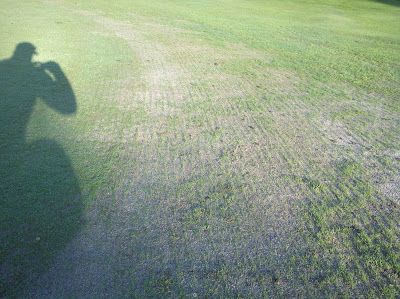Despite the incredibly wet weather during the month of May this year, we have finally completed the second of three phases of our tee box renovation process. The bentgrass sod arrived and was laid all in one day on Thursday the 23rd. Only 3 days later on Sunday we opened the tees on 2 and 3, and just yesterday opened the tee box on 8 now that it has rooted a little bit it can tolerate some more serious divoting. The tees on 15 and 17 are growing in nicely, and fortunately we had a little extra sod left over to make some small pads to hit off on on those tees, so as of today all the new tee boxes are open!
With that, my sincere thanks to all the sponsors who donated not only to our tee box renovations this year, but also to those of you who donated towards the new cartpaths last fall. Without your help, we would not have been able to make the significant updates to the course in the last year that we did.
I like to compare our 50 year old golf course to a 50 year old house. After years of use, abuse, and changes in design tastes and perception, things just need to be fixed, replaced, and updated. Even though a golf course is a living and breathing thing, it to simply just wears out over time.
 |
| Laying down an instant carpet of bentgrass on hole 3 |
 |
| One week after sodding and 8 tee looks awesome |
 |
| 17 tees growing in nicely |
As it stands right now, we have completely renovated the tees on holes, 2, 3, 5, 8, 12, 13, 14, 15, 16, and 17. Furthermore, I have determined after some serious analysis that the tees on holes 9, 10, and 18 are "salvageable" in the sense that they are fairly level, not very thatchy, and don't require any serious design changes to make them up to date. With that, we have been aerating and topdressing these tee boxes in an effort to help firm their surfaces, enhance surface drainage, as well as level them out a little bit.
All that is left on the list then to renovate this coming fall is 1, 4, 6, and the combined tee on 7 and 11 and we will have a complete golf course of new tee boxes!
Now if it would quit raining for a few days, we could actually finish the bunker renovation process also. We still have 2 bunkers left to finish up, one on the right side of 2 green and one on the left side of 16 green. Both of those bunkers required some reshaping/downsizing to make them a little more modern and maintainable. All of the bunkers this year had drainage installed in them, however at this point the drain lines don't actually go anywhere, so later this fall we will have to rent a trencher to complete the project so that the water in the bunkers actually drains to somewhere.
 |
The bunker left of 16 green is now about 40% smaller, but has a flash
on the back edge that makes it more visible from the tee. |




















